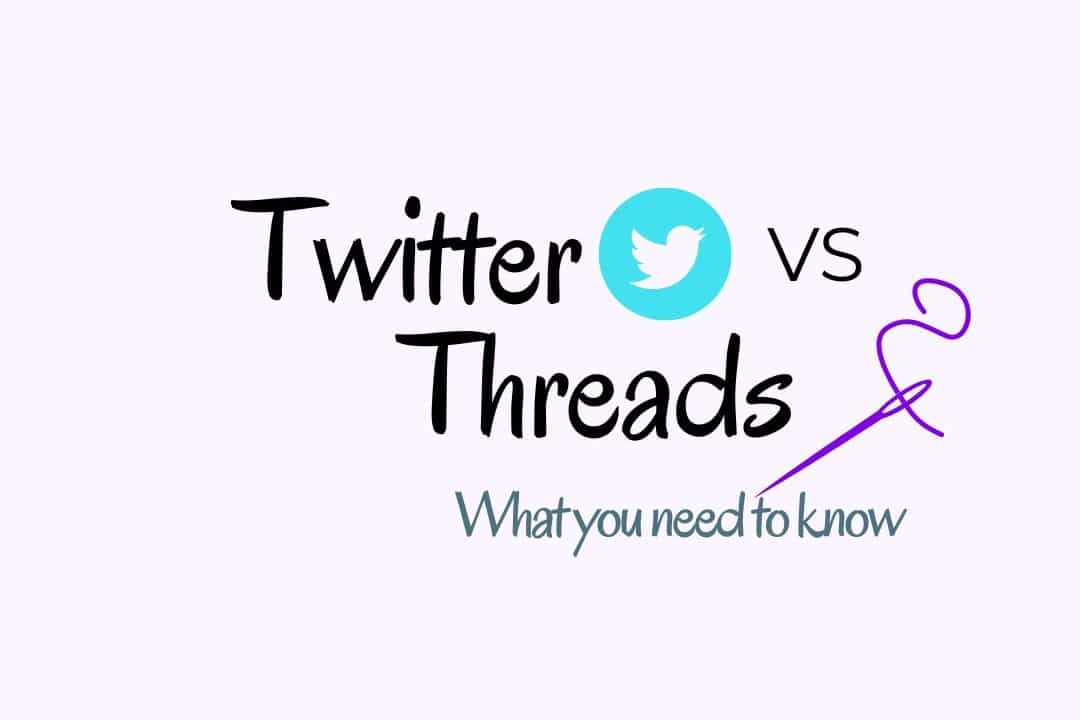In the realm of social media, the micro-blogging phenomenon has taken the world by storm. Platforms like Twitter and Threads have revolutionized the way we share short text updates, giving us a glimpse into the lives and minds of individuals, brands, and influencers. In this blog, we will delve into the similarities and differences between these two rival platforms: Twitter, spearheaded by Elon Musk, and Meta’s Threads.
Character Limit:
One of the defining features of micro-blogging platforms is their strict character limits, which compel users to convey their thoughts concisely. Twitter has long been associated with its iconic 280-character limit for tweets, while Threads allows slightly more room to express oneself, with a character limit of 500. Both platforms encourage users to make every word count, fostering creativity and succinctness.
Account Signup:
When it comes to creating an account, the two platforms diverge in their approaches. To sign up for Threads, one must have an Instagram account, as the platforms are integrated. In contrast, Twitter is a standalone app, allowing users to sign up directly without any underlying prerequisites. This distinction provides users with different entry points into the micro-blogging world.
Finding Content:
Finding and engaging with content on social media is paramount for users seeking relevant information and captivating stories. Threads takes inspiration from Instagram, allowing users to scroll through their feed, learn from the pages they follow, and discover new content. Twitter, on the other hand, offers a vast array of hashtags and trending topics, enabling users to explore a wide range of interests and conversations. While Threads caters to a more curated and personalized content experience, Twitter excels in providing real-time updates on global trends and breaking news.
Followers:
The concept of followers forms a crucial element in micro-blogging platforms, allowing users to build an audience and connect with like-minded individuals. Twitter distinctly separates the “following” and “followers” tabs, enabling users to manage their relationships and track their own followership. In contrast, Threads does not feature a “following” list on user profiles, shifting the focus to the content being shared rather than the follower count. This difference in presentation offers users distinct ways to navigate their connections within the platforms.
Account Deletion:
When it comes to closing an account, the processes differ significantly between Threads and Twitter. Deleting a Threads account necessitates deleting the associated Instagram account as well, tying the two platforms together tightly. Twitter, on the other hand, allows users to deactivate their accounts, with a simple reactivation possible within 30 days. This contrast in account deletion highlights the varying levels of integration and commitment required from users.
Reshares:
The ability to reshare content plays a vital role in spreading information and amplifying voices on micro-blogging platforms. Both Threads and Twitter embrace this feature, albeit with different terminology. Threads users can repost content, while Twitter users can retweet, allowing them to share tweets and threads that resonate with them. This similarity in functionality promotes engagement and facilitates the viral spread of compelling content.
Usernames:
A user’s username is an essential aspect of their online identity. Threads ties its user profiles directly to their Instagram accounts, making it impossible to change the Threads username without modifying the Instagram username as well. Twitter, on the other hand, offers more flexibility, allowing users to change their usernames independently of any other platforms or accounts. This distinction gives Twitter users greater control over their online personas.
Searching Capabilities:
Discovering new accounts, hashtags, and tweets is made easier through robust search capabilities. Twitter surpasses Threads in this aspect, offering a comprehensive search functionality. Users can explore accounts, follow trending hashtags, and search for specific tweets. Threads, in contrast, primarily focuses on account search, limiting the breadth of content exploration within the platform. This discrepancy makes Twitter a more powerful tool for finding and engaging with diverse conversations.
Mute Function:
To enhance user experiences and manage their online interactions, both Threads and Twitter provide a mute feature. Threads takes it a step further by allowing users to hide comments and replies containing specific words, protecting them from abusive or unwanted language. Twitter’s mute feature, on the other hand, only applies to tweets, enabling users to silence specific users or keywords in their timeline. While both platforms prioritize user control, Threads provides additional protection against negative interactions within comment threads.
The takeaway thus far? Threads, with its integration with Instagram, emphasizes a curated and personalized content experience, while Twitter excels in real-time updates, searching, and global conversations. By understanding the similarities and differences between these platforms, digital marketers can leverage their unique features to reach their target audiences effectively and navigate the ever-evolving landscape of social media.






